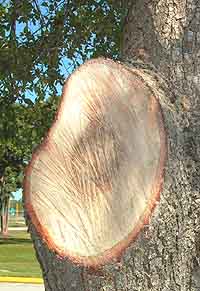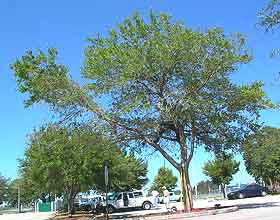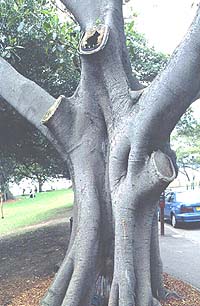Home > Pruning shade trees > Damage caused by pruning
Damage caused by pruning

Pruning is a double-edged sword, either helping or hurting according to if, where, when, how, and why it is applied. When properly executed, a variety of benefits can occur. Benefits include reducing risk of branch and stem breakage, preserving health, better clearance for vehicles and pedestrians, improved appearance, enhanced view, and increased flowering. When improperly performed, pruning can harm the tree's health, stability, and appearance.
 Several
consequences occur when pruning is not performed at all. These include development
of low aggressive limbs, weak codominant stems, bark inclusions, and accumulation of dead branches. The first three occur primarily,
but not exclusively, in planted trees. They are less likely to occur on trees
growing in a forested area. Formation of codominant stems and defects such as
inclusions can lead to increased risk of breakage. Topping trees and overlifting are extremely harmful procedures.
Several
consequences occur when pruning is not performed at all. These include development
of low aggressive limbs, weak codominant stems, bark inclusions, and accumulation of dead branches. The first three occur primarily,
but not exclusively, in planted trees. They are less likely to occur on trees
growing in a forested area. Formation of codominant stems and defects such as
inclusions can lead to increased risk of breakage. Topping trees and overlifting are extremely harmful procedures.
See: More on topping.
One of the most common, unrecognized defects in planted trees is formation of large low limbs (left photo). They could overextend and break, or they may droop under their own weight and have to be removed later leaving a large pruning wound (right photos). Removal of large branches and those more than about half the trunk diameter are more likely to initiate decay than removal of smaller branches. Removing branches with a flush cut can begin a process that leads to trunk decay. Cavities, cracks and hollows can result from removing large branches. Train trees so this type of cut does not have to be made!

